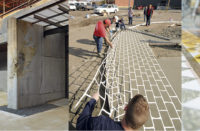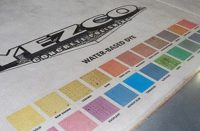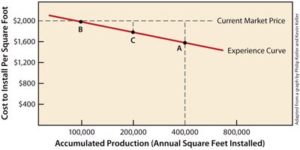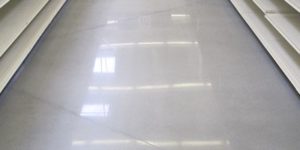For the decorative concrete contractor — or any contractor — the estimating stage of any project is critical. Here at the Renew-Crete Systems training seminars, I stress the importance of a complete and thorough estimate. The plain and simple fact is that a profitable job starts with a good estimate. On the same note, where the profit margin is slim, one will find there was something missed on the initial estimate or someone misjudged the amount of time needed for a particular element of the project.
Here are some ideas I suggest at the Renew-Crete Training Seminars: Most importantly, always be professional. Start by showing up for the estimate on time. If you are going to be late, call. Dress professionally. Don’t show up full of concrete and release powder so that you are unable to sit down in their home and talk with them. Be sure to take a few actual samples as well as pictures and references to use in your presentation.
Make sure to complete a written estimate. Preferably, use a multi-copy, preprinted estimate sheet. Then when you leave, each party has a copy for later reference. The estimate sheet should have an area to make a sketch or drawing of the project. Remember, some of these projects may turn out to be tens of thousands of dollars or more. Not every customer will decide right at that moment to move forward with the project. It may be a week or six months until they call and tell you they are ready to start the job. When you have a copy of the estimate to refer back to the details, you will sound professional and prepared to answer any questions they might have. This will also save you the time of having to reestimate. A complete estimate will help you plan out the job and your approach on how to complete it.
Another important point to remember is to be prepared. Most customers are expecting you as a contractor to handle all aspects of the project. You will need to be able to recognize potential problems, how to deal with them, and their associated costs. An example: You are called to estimate an existing pool deck that the customer would like renovated. The deck has an existing coating that is failing and needs to be removed. You will need to know what needs to be done as well as the costs associated with it. When estimating, if you are stumbling trying to figure footage, removal costs or other incidental costs, the customer may not have confidence that you can actually complete the proposed project. This can result in a lost sale.
Here is a formula chart used for figuring out the area of different shapes. I created it years ago, laminated it and kept it in estimate book to help with those complicated measuring jobs.
Area Conversion Chart
Area of a Square = length X width
Area of a Rectangle = length X width
Area of a Triangle = base X 1⁄2 altitude
Area of a Parallelogram = base X altitude
Area of a Trapezoid = altitude X 1⁄2 the sum of the parallel sides
Area of a Circle = square of diameter X .7854
Area of a Circle = half diameter X half circumference
Area of a Circular Ring= sum of the diameter of the two circles
X the difference of the two circles and that product X .7854















